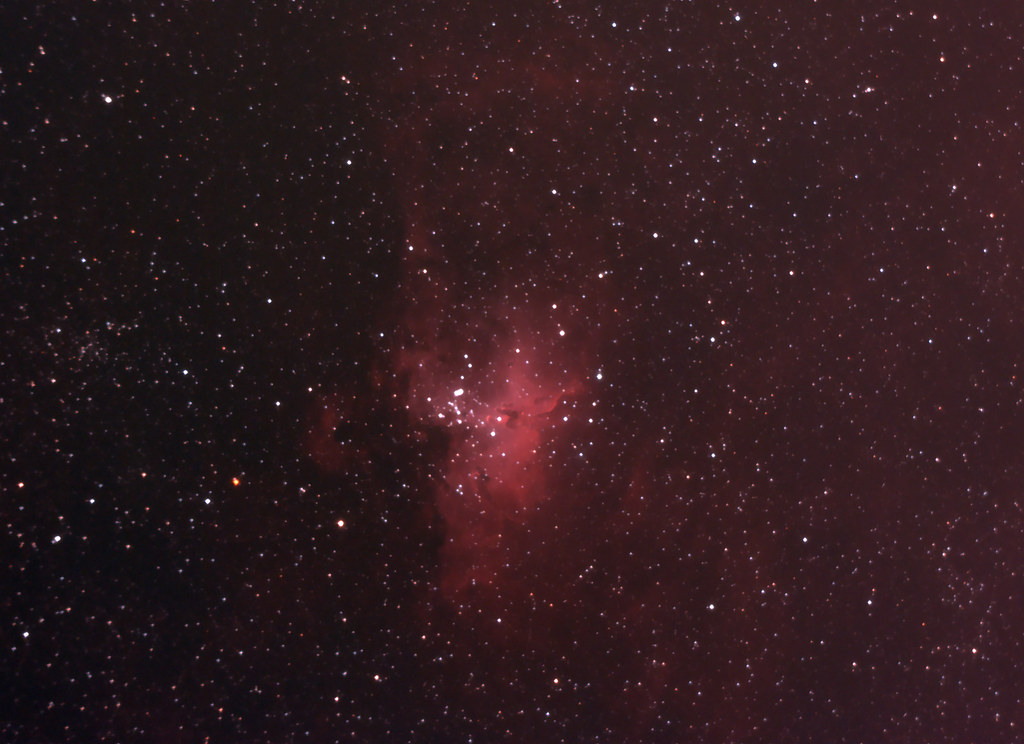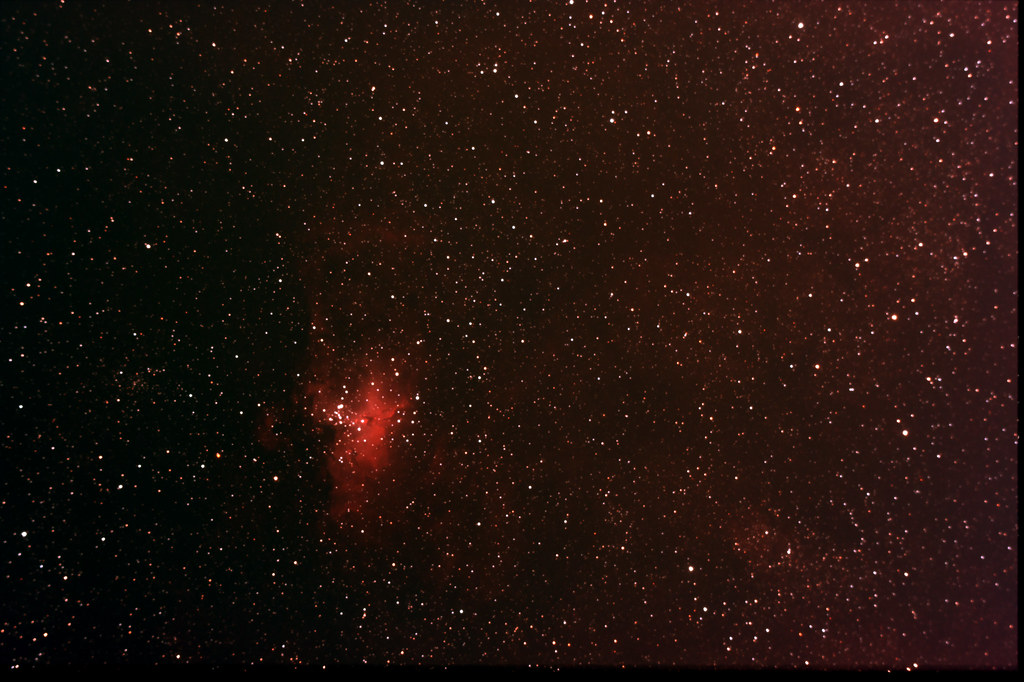About 20 dark frames were acquired earlier in the evening and another 10 were taken as I was tearing everything down. The next day I used the t-shirt method to acquire my flat frames. Some older bias frames were use to round out my calibration sets for ImagesPlus.
The image below is only about 1/3 the total area of the full frame size. The Eagle Nebula is pretty small for my imaging scale when using the William Optics Zenithstar 80FD. With the flattener in place I am at about 444mm focal length. Eventually I will try this with my C8 and the 0.63 reducer. As I do more imaging I am finding what focal lengths I really need. Now I realize that something around 800mm would be a good complement to my collection. Currently I have my eye on the Vixen R200SS. Lots of saving to do for that one!

EDIT: I did some quick processing of the full image and posted it here just to give you an idea of the object size as compared to the camera's sensor size:

1 comment:
could you describer your autoguiding setup ?
Post a Comment